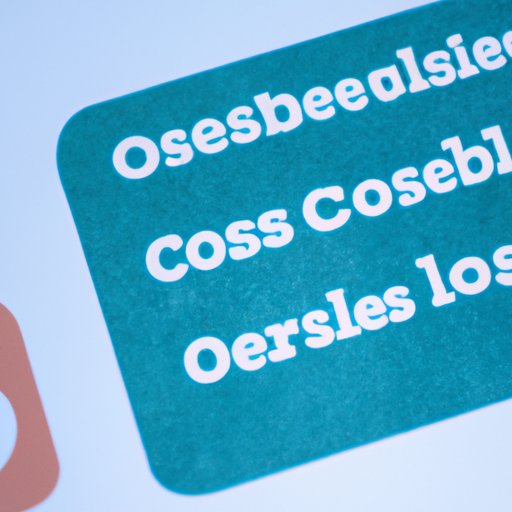
Introduction
Headless CMSes have grown in popularity due to their flexibility and scalability, allowing organizations to manage content across multiple platforms seamlessly. However, a common problem with these CMSes is that they come with a cost. In this article, we will explore different ways readers can get a headless CMS for free.
Use open-source headless CMSes
Open-source headless CMSes are gaining traction as more developers contribute code to make these systems better. They are free to use, with many offering abundant features and extensive customization options. Some popular open-source headless CMSes include Strapi, GraphCMS, and Cockpit.
Strapi is one of the most popular headless CMSes on the market, providing users with powerful customization tools and ease of use. GraphCMS is another widely used headless CMS that lets developers create schema building blocks, custom queries, and mutations using a visual editor. Cockpit is an ideal choice for small to medium-sized projects, boasting a user-friendly interface, and a modular architecture.
The advantages of using open-source headless CMSes are bountiful, including a vast and robust developer community, significant cost savings, high flexibility, and complete control over codebase. However, the downsides include less support, limited functionality, and the need for development expertise.
Take advantage of free hosting options
Free hosting options for headless CMSes are available but limited compared to traditional CMSes. These hosting providers offer free plans with specific limitations, making them ideal for small projects and testing purposes.
Hosting providers such as Heroku, Netlify, Firebase, and Zeit offer free plans that support popular headless CMSes. Heroku provides a free plan with 512MB of RAM, while Netlify offers a free option that includes unlimited bandwith, but limits minutes of build time. Firebase offers a free plan that includes 1GB of storage and 10,000 writes per day, with a limit of 100 simultaneous connections. Zeit offers a free plan with unlimited projects, unlimited team members, and five Git integrations.
While free hosting services may not be as reliable for more extensive projects, these options are ideal for testing, learning, and small-scale development.
Learn how to code your own headless CMS
Coding your own headless CMS may sound daunting, but it is an excellent way to customize your CMS without limitations. You can tailor the CMS to your organization’s needs, adding features that are not present in off-the-shelf CMS solutions.
Node.js and Python are both popular programming languages for creating headless CMSes from scratch. Node.js is an excellent choice for building web applications because it uses JavaScript, making it ideal for front-end and back-end developers. Python is renowned for its readability and ease of use, making it an ideal choice for beginners.
Coding a headless CMS from scratch provides complete flexibility, robust customization options, and added data protection. However, it requires a considerable amount of development expertise and can be time-consuming when building from scratch.
Sign up for a flexible headless CMS
Flexible headless CMSes offer users the ability to create custom content architectures without the need for development expertise. These platforms provide a range of customization options that allow organizations to build almost any kind of digital experience they want.
Some popular flexible headless CMSes include ButterCMS, Agility CMS, and Contentful. ButterCMS is an excellent option for larger teams that require extensive workflow and deployment management tools. Agility CMS is an all-in-one platform, providing users with the ability to build websites, web applications, and digital experiences with powerful developer tools and a user-friendly interface. Contentful is an ideal choice for developers and content creators looking for a high-performance, multi-channel CMS system that scales effectively.
The advantages of using a flexible headless CMS include complete customization options, ease of use, scalability, and less need for development expertise. However, the costs for these solutions can be high, and customization options may be limited compared to developing a CMS from scratch.
Attend webinars or events that teach headless CMSes
If you are new to headless CMSes, attending webinars or events can be an excellent way to learn about these systems. These events offer attendees the opportunity to learn from industry experts, ask questions, and network with other professionals in the industry.
Some popular webinars or events that teach headless CMSes include Contentstack, Strapi, and Agility CMS. These events offer attendees the opportunity to learn about the latest trends in headless CMS development, interact directly with industry experts, and gain new insights into building custom headless CMSes.
Attending webinars or events can provide invaluable insights into the latest trends and development techniques for building headless CMSes.
Leverage podcasts and free headless CMS-related courses on Udemy or other online resources
Podcasts and online courses are also excellent resources for learning about headless CMSes. Podcasts provide insights from industry experts and thought leaders, while online courses offer comprehensive and structured learning resources.
Some popular headless CMS podcasts include The Headless CMS Show and The Headless Way. These podcasts offer insights into the latest trends, news, and expert insights into developing custom headless CMSes.
Online resources such as Udemy offer many free and paid courses on headless CMS development, providing comprehensive and structured learning resources. These resources are an excellent way to learn about headless CMS development without breaking the bank.
Conclusion
In conclusion, getting a headless CMS for free requires a combination of options discussed in this article. Using open-source headless CMSes, taking advantage of free hosting options, developing a CMS from scratch, leveraging flexible CMSes, attending webinars or events or using podcasts and online courses can provide readers with the knowledge, skills, and tools they need to build custom headless CMSes.
By exploring these options, organizations can save a considerable amount of money while still reaping the benefits of a headless CMS.
Whether you are a startup, small business, or a large corporation, exploring these options can help you build a robust digital experience for your customers.





